Unreal Gold is the bundle containing Unreal and its expansion Return to Na Pali. This game is what put Epic Games on the map, it was the debut of the Unreal series and Unreal engine. While it is considered a classic, it is for some reason overlooked by Half-Life, Quake, and the first two DOOM games in most discussions, despite the fact that Unreal accomplishes more than any one of those.
I suppose the main reason it is overlooked is because of Unreal Tournament, the multiplayer Unreal franchise, which stole all the thunder and became the focus of Epic Games for almost a decade. When people think Unreal, they think Unreal Tournament.
I was just getting into FPS when Unreal came out, but on consoles so I was playing Turok instead. Obviously since then I’ve transitioned fully to PC gaming and have played tons of classics, but one that eluded me for a long time was Unreal. I did try playing it years ago, but it wouldn’t run except maybe in a tiny 800 x 600 window. I didn’t find the unofficial patch at the time, and once I learned of it I decided to wait for Unreal Evolution. Well, now that Unreal Evolution has arrived, and is up to version 2.2 no less and supports Return to Na Pali, it was time to finally play this classic, but with this mod which takes it to another level.
Unreal Evolution is the definitive Unreal, from the creator of GMDX which is the definitive Deus Ex. Unreal Evolution is a generally mild, professionally done overhaul mod, improving AI and enemy loadouts and adding some new enemy abilities here and there, adding new secrets and item pickups that perfectly blend into each map, implementing a weapon upgrade system which really benefits this game, making some balance changes and AI improvements to make for a more hardcore, skill-based experience, and adding one more level to the expansion.
This mod author fully understands this sort of game design and the mod is perfect for what it is. Like GMDX, the changes brought by Unreal Evolution are seamless and feel official, as if they’re naturally part of the game. No negative qualitative differences separating mod from game here. It makes the unmodded game feel like an unfinished beta in comparison, so Unreal Evolution mod is truly a must, even though it unfortunately installs itself in such a way that it compromises the base game installation and can’t be used with the mod that upgrades the game’s engine to Unreal Tournament’s.
So before we start the review, we must list the required addons for playing this game in order:
- Install Unreal Gold from GOG or Steam.
- Launch the game to the main menu, then quit.
- Install OldUnreal 227i patch (download UnrealGoldPatch227i.7z)
- Install Unreal Evolution latest release.
- Install UnrealHD
- Install Unreal227 HD Texture Pack v3.03 (the latest v3.04 is unstable)
- Install ALAudio for Unreal 227i but back up the original files just in case. On Windows 10 20H2 and on my 5 channel surround system, this had no LFE, but on Windows 10 21H2 this was fixed.
- Install dgVoodoo 2, to wrap the game to DX12 and enable HUD scaling by using a low in-game resolution like 720p but setting a high resolution in the config file under the DirectX options. This config is set to 3840 x 2160 by default, and will wrap DX9 to DX12.
- Everything is now installed so when starting a new game, be sure to select the correct mutators
Optional Mod Downloads: If you want to use these, install them after all of the above.
- DirectX 11 Renderer – This will drop your performance. Only use this if you plan to use the texture mods below, otherwise the best option is to use DX9 (added by OldUnreal 227i above) and dgVoodoo set to DX12. AMD’s RDNA 2 cards (RX 6000 series) handle it best due to their infinity cache. Don’t use V-Sync with this unless your frame rate target is only 60 – either use FreeSync/G-SYNC with an FPS limiter just below your refresh rate value (e.g. limit FPS to 118 on a 120 Hz display), or if you don’t have those, just use windowed mode + SRWE to achieve borderless window.
- HD4K Extreme Resolution textures for DX11 Renderer (two part download) – Causes some microstutters, not recommended even on RDNA 2. Unreal isn’t well optimized for this – they run far better in Unreal Tournament.
- Unreal Normal Height Maps for DX11
When starting a new game, make sure the correct mutators are specified. It should look something like this:
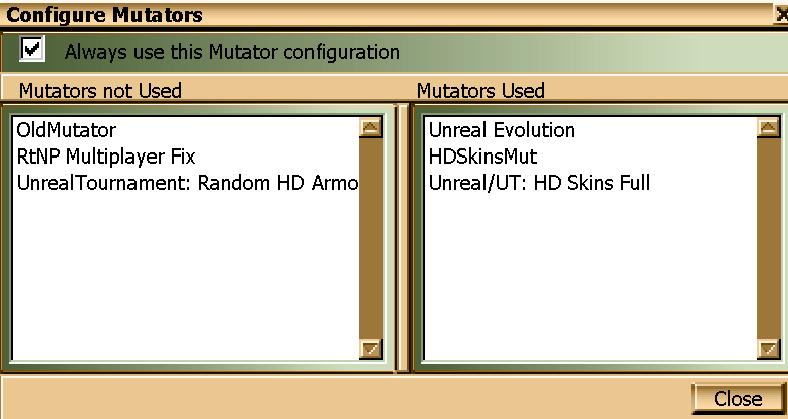
We also highly recommend playing on either Unreal difficulty mode, or better yet Hardcore which has some exclusive content but also limited saves. It saves approximately every 5-10 minutes so it’s not too extreme. Playing this game without any challenge doesn’t make sense to us. If you don’t play games to overcome challenging gameplay, then simply scratch this one off your list.
It is lovely that this game actually has well balanced difficulty modes. It is not one of those games where if you’re in the line of sight of an enemy with a hitscan weapon, you can’t avoid getting shot. No, it has dodging for a reason. It works.
Hardcore has limited saves and is… extremely hardcore as the name implies. Some sections in this game will require MANY attempts to pass, so combine that with limited saves and you’re in for a rough time. From my experience, this is how I’d rank the difficulty of the following FPS games just for reference: Half-Life: Opposing Force on Hard < Turok 1-2 on Very Hard < DOOM 2016 on Nightmare < Unreal on Unreal < DOOM Eternal on Nightmare < Unreal on Hardcore (no manual saving) < DOOM 2016 on Ultra Nightmare (saving is so limited that it jumps ahead of Unreal, even though the combat is easier) < DOOM Eternal on Ultra Nightmare.
Unreal’s difficulty is never frustrating because it’s fun; there’s no difficulty derived from battling the game’s clunkiness, which is often the case for games. The difficult parts are intelligently designed and the only barrier is your own skill, as it should be. It is less about reflexes than DOOM Eternal on Nightmare.
Here are some useful tips when starting out:
- When you hear a device beeping in-game, that means your Translator item has picked up a new text entry from the environment, e.g. a log or journal or sign. The opening of the game, which mostly lacks any sort of tutorial, does actually show you this, but you’re not going to see the keyboard prompts at large resolutions. By default the Translator is bound to the F2 key.
- There is an inventory with items. It functions merely as “Next item / Previous item” bound to the bracket keys by default. At large resolutions, you’re not going to be able to read the on-screen text displaying what inventory item you equipped or activated. Luckily you can easily read this information in the terminal window which is bound to the tilde key by default.
With that out of the way, let’s continue on to the review.
Unreal is a very fast paced Sci-Fi FPS with the most varied level design in the history of fast paced action packed FPS. More varied than any DOOM, any Wolfenstein, any Half-Life, any Turok, even Painkiller and Serious Sam: The Second Encounter. Not just varied artistically, where it excels as you travel through different worlds, exploring ancient temples and ruins as well as spaceships and more, all belonging to different species. You will encounter different cultures, all of which are artistically unique. It’s a better Tomb Raider game than any Tomb Raider. It doubles as the best Indiana Jones game (tons of games beat the Uncharted series here). Unreal is visceral. It’s unreal! Utterly unparalleled within its genre.
And these areas not shy on attention to detail, with lots of switches or screens and other alien technology responding to your touch or approach. Texture design is very varied in all the different places you visit. It surpasses every 90s FPS I’ve played in this regard.
The level design is also unrivaled in its functional diversity; Unreal has everything from claustrophobic ambushes to maze-like levels, open exploration focused areas, arenas of all kinds, oppressive interior spaces, tricky interiors with more puzzle or platforming focus (lots of combat in all of these too), CQB slugfests, environmental hazards, amazing verticality, a few classic DOOM or Quake style interior areas, the list goes on.
There is also exceptional attention to detail such as using weapons under water – while they still work, the projectile speed for many of them is reduced. Same for the low gravity section in the game.
Just imagine if this game had a Black Mesa quality remake (in terms of art design reimagining) on Unreal Engine 5.
The secrets on its levels also vary immensely, having better and more logical versions of classic DOOM and Quake puzzles in some places (hidden switches in places that reveal secret areas, but these switches are actual switches opposed to identical looking wall panels), cleverly hidden out of the way areas, places hidden in plain sight where you have to figure out how to get there (often times with platforming, other times by finding hidden routes), it has most kinds of FPS game secrets you can imagine. The secrets design overall isn’t quite as brilliant to me as Turok 2 and they’re not as insane as those in Serious Sam: The Second Encounter, but their variety is unmatched.
Secrets are usually very rewarding but there is at least one glaring exception: the hidden ASMD in the Cellars at Dasa Pass level. It is useful since at this point in the game you will be low on ASMD ammo, and even though there’s more somewhat nearby, it’s in a series of two arenas that remains one of the most challenging parts of any FPS I’ve played, so that extra ammo is handy regardless. But this secret is in a cool place and I wish it was something more special/unique.
And like many of these other classic FPS games (or classic PC games in general), Unreal has no hand holding. You take on the role of Prisoner 849 who crash lands… somewhere, you don’t even know at first. The plot is just to survive, adapt, and try to escape. No objective markers, not even a quest log. You have to figure out what to do and how to advance, interacting with somewhat strange alien technology in the process.
The environment is full of text logs/journals you can find and read with your Translator item, perhaps taking a page out of System Shock’s book here, which would explain why the “Immersive Sim” crowd loves Unreal in particular (although it doesn’t have the backtracking of those games). These texts are also well written and do bring a coherent narrative design to this game, surprisingly.
This all results in superior combat diversity, again unmatched among all FPS games I’ve played. Arenas with lots of enemies which always results in dynamic AI infighting, tighter areas perhaps with verticality and teleporting/invisible enemies leading to cat and mouse gameplay, mazes with traps and sometimes pitch darkness, and everything in between. Unparalleled diversity when you combine the level design with the enemy design and weapon design, no other FPS comes close.
This is one of the longest FPS games of this kind, featuring 38 campaign levels and about half that for its expansion. It has to be over 20 hours long, easily. Yet it never gets old due to its excellent diversity and meticulous attention to detail.
To sum it up, Unreal’s level design:
- Is perfectly designed to showcase the abilities and AI of its vast amount of enemies, such as verticality that can be used by some enemies, water that can be used by others, oppressive CQB death traps that the AI uses to their advantage, long range which other enemies can use well
- Is set up to make all weapons useful at times, less useful in others. Not just from mixing CQB and long distance but other sections being great for ricocheting weapons, each projectile weapon, or the hitscan weapons
- Lots of secret areas and items especially with Unreal Evolution. A lot more than any Half-Life and these secrets are well designed, not just the Doom style “this random wall tile unlocks something”
- And of course its use of big outdoor spaces (some flat, some not at all), water and under water, mazes, all sorts of arenas with different key elements to them (e.g. ones with lots of cover, ones with verticality, ones with traps, the good thing here is they’re not all just big open spaces), death traps, deadly CQB, both simple and complex interiors, the most diversity by far and all used brilliantly
The levels provide infinitely more diverse and comprehensive combat challenges than any pure FPS I’ve played. You can be overwhelmed by waves of enemies in Unreal, outmaneuvered in cat and mouse gameplay against the deadlier Skaarj enemies in some places, trapped and mauled in close quarters, killed by all sorts of traps, fall to your death, drown, get caught for being too slow, get ambushed and caught flat footed, the levels and enemy design combine to create such diverse and clever gameplay that takes actual skill to overcome. I rank Unreal Evolution’s “Nali Castle” and “The Sunspire” as the top 2 best traditional FPS levels of all time, in that order.
Most decent FPS games have multiple showcase level designs, with simpler forgettable smaller levels interconnecting them. Unreal ultimately fits this bill, but those interconnecting levels are much better than in most games, mostly with Unreal Evolution mod which improves enemy encounters on seemingly all levels. The only outstanding issue is that many levels don’t have enough secrets, while many other levels are ripe with them. No level should have only a small handful of secrets I think.
Showing more of the exploration side of Unreal.
Enemy Design
Its enemy design is also as varied as any FPS there has ever been, having many different kinds of ground forces with some preferring melee combat and others preferring ranged with the ability to switch between both on the fly (more on this later), heavy units, aerial enemies, ambush units, aquatic enemies, amphibious enemies, critters and vermin, the list goes on.
Sure, Turok 2 and maybe Serious Sam and Painkiller technically use more distinct meshes for enemies, but their variety is ultimately less as the enemies are less varied in movement (e.g. no flying enemies in Turok 2 besides wasps), AI, and weapons and abilities compared to Unreal.
There is so much attention to detail with the enemy design. Some enemies can deploy different kinds of energy shields or armor, others can go invisible (amusingly enough, Mercenaries who do this will wave goodbye before activating invisibility, just like Endtrails in Turok 2), others can teleport. Some fire weapons with projectiles you can shoot/detonate in mid air. Compare this to a game like Half-Life 2 where you will just mag dump some Combine who sit there mindlessly eating it while trying to mag dump you in return.
No FPS tops Unreal in enemy diversity, not any DOOM game and these excel here too, not any Serious Sam or Painkiller game which also excel here, not any Turok game which have lots of enemy diversity on paper but in execution they tend to be very similar to one another.
This sums up how I feel about Unreal’s enemies, especially the Skaarj and Mercenaries.
Weapon/Item Design
Do you know what else is incredibly varied? Its arsenal. The entire Unreal series is legendary for its weapon design, and with good reason. Once again I rank Unreal as #1 of all time in this category for this genre, same for level design and enemy variety. Many of the guns also appear in Unreal Tournament, but not all of them. The defining factor of Unreal series weapons are:
- Diverse arsenal with very different functionality from one another. You will not be spending an extended period of time with any one gun, once you have the first three.
- Weapons with 2-4 functionalities, so that one weapon is really like multiple
- Some of the steepest skill curves in FPS history, you really have to learn to use these weapons
- Probably the most attention to detail in weapon design in the history of FPS, not just for the above reasons including hidden functionalities but other factors like some guns having more knockback (kinetic energy) than others, and how you can use this to your advantage to use a high knockback gun (e.g. ASMD, Rifle, Dispersion Pistol alt fire, or explosives) to knock an enemy off a tall ledge to either kill them with the fall or just drop them into a more dangerous area where you have the high ground and can rain explosives down on them or snipe them (or maybe drop them into water or a place where there’s a lot of AI infighting). True creativity is part of your arsenal in Unreal.
Unreal has no melee weapons and no superweapons, but the game is quite perfectly balanced around what it does have. It has ten weapons which are, by default, bound to the number keys, and you also store items in a cyclic inventory that merely functions as “next item/previous item.” These items are all very useful and some are the famous powerups also seen in the Unreal Tournament games, namely the Damage Amplifier (4x damage for energy weapons: Dispersion Pistol, Stinger, ASMD), Force Field, Invisibility. These are rare and very rewarding, though even more rare are the Jump Boots which give you insane jump height and invincibility to fall damage.
Other items include the Nali Seed which is a deployable health item; you must wait for it to grow into a full plant, which heals 30 HP. Speaking of healing, other Nali plants are found in some levels, as are regular health kits (+20 HP) and rare, often hidden more potent health kits (+50 HP and lets you go over 100 HP, up to 200 HP maximum). Many of this game’s items are placed in different sorts of breakable containers from boxes to barrels to more alien containers. Other items in Unreal include very short lived flares and flashlights, the latter having a very strange functionality also seen in Deus Ex (which also shares some ambient sounds with Unreal). These light items will be necessary to combat darkness in some portions of the game.
There is also an energy shield and armor which are not stored in your inventory; they work like health pickups instead. These are very useful for protecting against typical projectile weapons, but not all forms of damage. Often times your energy shield will be drained, so when you find powerups for it, it’s very rewarding. Unreal Evolution also adds a rare hand grenade item.
The Dispersion Pistol is the first weapon in the game, and it replenishes its own ammo source over time so that you never run out of ammo. And it can be upgraded over time, with six upgrades being spread out and hidden throughout the game. But Epic Games was thoughtful here and didn’t make them the most secretive items; they’re easy to find and very rewarding at the same time, and it’s important for game balance that you do upgrade it.
Unreal has more entries in our list of the 50 coolest guns in video game history than any other game, with 6 of its 10 guns being featured!
We only have one weapon related complaint for Unreal, and that’s the fact that it has both the Stinger and the Minigun – both are miniguns. They are functionally plenty different; the Stinger fires a unique ammo source (Tarydium shards) and its secondary fire is a shotgun blast from all barrels, and its projectile speed is noticeably slower than bullets which adds a skill curve. The minigun on the other hand shoots the same bullets as the regular Automag pistol, and projectile speed is that of bullets (hitscan) so it has a very different use case indeed. Its secondary fire mode is also lightning fast making it a devastating close quarters weapon that burns through ammo faster than any.
So while the design of both guns are great, they still seem too similar. I wish instead of the Minigun we had the Translocator, which would be particularly brilliant in Unreal Evolution considering some enemies can teleport too.
Aside from weapons having 2-4 different functionalities, we must mention that some of these are hidden. The game has primary and secondary fire assigned to LMB and RMB respectively by default, so you have to figure out if there are any additional functionalities. For example, the Eightball Gun shoots rockets as primary fire, grenades as secondary that detonate when hitting a creature but are otherwise timed. You have to figure out that holding fire spools up the gun to fire up to 5 projectiles at once. You also have to figure out that if you aim at a target, then the rockets become homing. You also have to figure out that holding both fire buttons at once shoots rockets in a different formation; compacted together opposed to the usual horizontal spread.
Another example is the ASMD (Shock Rifle). Primary fire shoots a fast, powerful energy beam with strong knockback/kinetic force. Secondary fire is a bigger, slower moving orb with even greater kinetic energy. Its hidden third function is using secondary fire to shoot the large, slower moving orb, and then shooting that with primary fire to detonate it, causing a massive and very powerful shock burst.
A related example we’ll give for hidden weapon functionality is that the Dispersion Pistol and ASMD can be chained together in combination, used in tandem. After shooting a target with a charged Dispersion Pistol blast, there’s a brief window in which an ASMD shot (either primary or a shock combo burst) does significantly more damage.
Also note that for some slow moving, gravity affected projectiles like the Eightball Gun’s grenades or the Bio Rifle’s secondary charged blast, you can alter their physics, their range with your own movement inertia. Just a nice, potentially useful attention to detail among many.
And of course, it’s very easy to kill yourself with many of the weapons in this game. Especially the ricocheting ones, the Razorjack and Flak Cannon.
To drive home the point of Unreal’s arsenal being more useful and well balanced than any other FPS of its kind, we’ve compiled a list of the use cases for each weapon featured in the game in the spoiler tags below. You’re never going to be using any one weapon for an extended period of time, once you have the first 3 guns in the game.
Even if you break down the weapons into their respective categories, it (and the UT series) has undeniably strong contenders for the best gun ever designed for more of these categories than any other FPS in existence. Best Sci-Fi sidearm ever? We gave that to Unreal’s Dispersion Pistol in our aforementioned list of 50 most awesome guns ever designed in gaming. Best shotgun ever? We gave that to the Flak Cannon which beat out the likes of Turok 2’s Shreddar. Best rocket launcher ever? It won that too with the Eightball Gun. Best bladed weapon ever? The Razorjack is certainly up there. Literally the majority of its arsenal is featured in our list of 50 most awesome guns in gaming history.
To go along with all these weapons, items, and diverse level design are advanced movement mechanics. You can run, jump, and crouch of course, and by default you can double click a movement key to dodge in that direction. You can also disable this with Unreal Evolution and bind dodging to a key, which I personally prefer. Throughout the game you can unlock the ability to dodge under water, a feature added by Unreal Evolution, and you can unlock aerial dodging. Using the under water dodge when swimming up towards the surface can result in you leaping out of the water like a dolphin which is very useful.
Having all of these weapons and items is great, but they have to be thoughtfully incorporated and balanced. The balance is brilliant, enemies can use most of these weapons including the secondary fire! Very, very few FPS games ensure the entire arsenal remains useful throughout the game, giving each weapon somewhat specific use cases (you can’t use one gun against everything, but they all have their place). Unreal does this despite having 10 guns with totally unique functionality.
Some other games technically accomplish this feat, like DOOM 2016 and DOOM Eternal, but their use for many of its guns is a lot more limited and some of their weapon modifications are rather useless.
Also, it is important to note that Unreal Evolution adds a few basic statistical weapon upgrade modules hidden throughout the game. They don’t change the game completely, and they actually improve its balance and longevity.
Ultimately Unreal has no flaws in where/when you first discover all of its weapons and items (not counting the one or two secrets that we all wish had a more interesting item). It’s always rewarding, it’s very well thought out. And the overall weapon design and integration of Unreal clearly surpasses that of all other FPS games of this kind.
AI
Now let’s get into the AI of Unreal. Having the aforementioned top tier enemy design is great, but ultimately not very meaningful if the AI can’t back it up. Thankfully, Unreal has the overall best AI of any fast paced action FPS I’ve played along with the Unreal Tournament games. Maybe not the most advanced technologically, but its effectiveness and balance is bar none. Yes, much more impressive than F.E.A.R. AI.
The more educated are aware that Unreal series AI is designed to mimic skilled players. They traverse the environment, whether it’s ground, horizontal or vertical, water, a mix of all of the above, mostly very well, and the mistakes they do make (for some enemies at least, including the Skaarj and Mercenaries) in traversing the environment just makes them seem imperfect and… more human, compared to the more perfect Unreal Tournament AI on harder difficulties.
Enemies play to their own strengths brilliantly. Many can dodge your shots either using the same dodge function you have or simply by jumping over things like your grenades or Bio Rifle projectiles. Here’s a list of some of the impressive AI attributes in Unreal:
- There are very few limitations on where many enemies can go in the environment. It has a few amphibious enemy types, and the Skaarj in particular can jump around and scale vertically nearly to the same extent as you and also swim effectively.
- Skaarj with shields and Mercenaries with armor will activate them depending on which weapon you fire at them (e.g. if it’s something heavy)
- Some Skaarj may prioritize melee combat – ripping you apart with their claws, but if you switch to a weapon that’s devastating up close, such as the Flak Cannon, they’ll back off and switch to ranged combat
- The same is true if outclassing some Skaarj enemies at range, for example if you use the (Sniper) Rifle against them, then they might switch to melee or even retreat to await better opportunities
- Some of the higher level, larger, heavily armored Brutes might try to crowd you if you equip the Eightball Gun so that either you don’t shoot it, or if you do you blow yourself up because he is likely to survive the encounter while you won’t
- Many enemies will see and avoid traps you leave in the environment, namely Eightball Gun grenades and Bio Rifle sludge. They’ll step around them or jump over them if need be. However, they are deliberately not perfect at this, showing great AI balancing.
- If you expose your back to certain enemy types, they’ll go full on aggressive and will know there’s no need to dodge anything
The list of enemy AI using actual tactics goes on. The tactics are noteworthy for virtually every enemy in the game, and let me remind you again that its enemy diversity is bested by no other FPS effectively. Even the simpler critters and vermin, their AI is suitable. A single, more normal humanoid enemy like a well equipped Skaarj or a Mercenary can pose a very threat in Unreal on Unreal and Hardcore difficulty, especially considering the brilliant encounter design and enemy placement in this game.
Of course not all AI is equally effective. The Slith are notably bad at traversing the environment compared to other enemy types, sometimes getting stuck, but ultimately they serve their purpose as more stealthy amphibious combatants, particularly dangerous under water. They are also immune to the GES Bio Rifle, which uses the same basic particle effect as their ranged attack, demonstrating excellent attention to detail once again. But it would’ve been nice if their AI was more up to the par with the likes of Half-Life’s assassins.
Ultimately, Unreal has the most effective AI of any single player FPS I’ve played. Above the Halo series easily, above the Half-Life series easily, above F.E.A.R. easily, above the DOOM series. The AI is just so much more capable and leads to much more fun gameplay.
Unreal knows exactly where to place enemies and which kinds, both expected and unexpected, it’s just masterful like no other FPS I’ve played, and I’ve played so many for over 20 years.
It is a long game, and when you see enemies start to use the weapons you’re using like the Dispersion Pistol, Eightball Gun, Razorjack, Bio Rifle, and more, it’s really cool. Then it’s cooler when you learn that the AI can use secondary fire on these. It’s cool when you see them use items like Invisibility which you can also get, or when you see them teleport or thoughtfully deploy shields. They do these things at opportune moments. They can also make your life a living hell.
The game also has straightforward and very awesome dynamic infighting. Due to the chaotic nature of the game, which is less about swarms of enemies like the classic DOOM games or Serious Sam or Painkiller, and more about thoughtful, tactical, high skill battles, enemies are going to damage each other at times. You can try to get this to happen too. When they do, they’ll fight each other, particularly if they are different types of enemies (different species). But if you’re the more immediate threat, they will still focus on you. Again, intelligent. There is not much scripted AI infighting in this game, I can only think of one moment.
Unreal even has basic stealth capabilities. Crouch walking muffles your movement noise, making it possible to sneak up on enemies who have a believable field of vision. The invisibility item is also awesome but short lived.
It’s like Unreal is many kinds of games in one. It does everything that most other fast paced action FPS games do, and more, and often does it better. We mentioned how varied its level design is, yet it masters all forms. Its enemy diversity is top tier, yet the AI is the most effective of any FPS I’ve played. Its weapon diversity is top tier, and the creative design of the weapons and balancing are the best of any remotely similar FPS I’ve played.
Unreal even has multiplayer which is the typical superior PC experience with dedicated servers and modding, as well as bots which Unreal always provided, although the multiplayer isn’t as fleshed out as the Unreal Tournament games of course. But Unreal is about as close to a flawless game as you’ll ever see.
Some games end up being a jack of all trades, master of none, but Unreal is the master of all trades for the type of FPS that it is.
Boss Fights
Unreal only has two real bosses, which come very late in the game and we won’t spoil them. But along the way you’ll encounter “mini-bosses” such as the one shown above. Although the actual bosses will be intimidating at first, they are far more exploitable than regular AI so ultimately the boss fights are far from the hardest things in the game. The hardest things in the game are regular but tough encounters.
To put this into perspective, on Unreal difficulty mode I beat the final boss in a single attempt, after failing the previous escape missions (where you have to run through a doomed ship and try to escape it while enemies are rampant) took me well over 20 attempts before I succeeded.
Return to Na Pali is Unreal’s content expansion featuring 18 single player levels and 6 Deathmatch levels for good measure. Unreal comes from a better era in gaming when expansions were not ripoffs and were often game-sized, as is the case with Return to Na Pali being about 10 hours long. Still no more than half the length of the base game (probably less), but very impressive for an expansion.
You play as Prisoner 849 once again, returning to Na Pali on a mission to locate a crashed ship and extract data about a weapon from it. And there’s even voice acting! Prisoner 849 leaves some audio logs for the narration.
This expansion starts off focusing on more elaborate outdoor areas with lots of secrets that are somewhat similar to those in the first Turok game. This results in much quicker progression (weapon/upgrade/item unlocks) than the base game due to its shorter length. As the expansion progresses, puzzles begin to play a bigger part in its gameplay than in the base game. Simple puzzles that involve interacting with the environment in fairly obvious ways. But while the outdoor environments are improved, interiors are less genius and overall level design isn’t quite up to par with the base game, but still easily surpassing Unreal II’s.
Another interesting thing to note are its new guns:
- Combat Assault Rifle: One of your starting guns along with the Dispersion Pistol, bound to the 3 key (sharing it with the Stinger). Primary fire is a fully automatic stream of hitscan bullets using its own ammo type, good for anything not tanky but will eat up ammo quickly. Secondary fire is a grenade launcher with good range (doesn’t have the typical strong arc/drop) which uses up the same ammo, you’ll be using this against Brutes for a while.
- Quad-Barrel Shotgun: This is actually a cut weapon restored by OldUnreal 227i patch. Primary fire is that of a normal pump action shotgun, secondary fire lets you fire multiple barrels at once, up to its maximum of four, very similar to the shotgun in Turok: Rage Wars. Uses its own ammo and the alternate fire is really devastating up close.
- UMS Grenade Launcher: Primary fire fires a grenade that detonates on impact. Secondary fire is a remote detonated grenade. Both have a high arc so you’ll have to aim down at closer ranges. There is a cool attention to detail where if a remote grenade directly hits a target, it will do damage and you can see a bloody impact and then it’ll deal maximum damage once you detonate it.
- UMS Rocket Launcher: Primary fire fires a single fire and forget rocket, secondary fire is laser guided. Very simple for an Unreal gun.
The new weapons have a lot of redundancy with the original weapons and ultimately don’t add much to the game besides flavor. I’d actually go as far as saying they’re damaging because now you will have two weapons assigned to one key in a game where switching between weapons quickly is pivotal. Every time I want to use the Dispersion Pistol + ASMD combo for example, instead of just switching between these two weapons I end up having to switch from the Dispersion Pistol to the UMS Grenade Launcher and then the ASMD. Or let’s say I want to quickly equip the Stinger to use its shotgun blast at close range, but instead I equip the Combat Assault Rifle and kill myself with a grenade instead, which is very annoying.
Sure, you can throw away weapons in this game, but you’ll pick them up again repeatedly since enemies drop them and they can be found in the world. Plus the ammo distribution in Return to Na Pali is designed around these new guns. The new guns make sense in the plot, being Marine (UMS) guns in a plot involving Marines, but the game would be better off without them.
New guns that end up getting in the way of gameplay, better outdoor areas with better secrets than the base game’s, less focus on interior areas, voice acting, and the soundtrack perhaps being more on display, these are the defining characteristics of Return to Na Pali. It provides only three new enemy types plus some new variants of previous enemies, and some of these are extremely brutal. Granted it takes place on the same planet the main game takes place in and the game’s enemy variety is already a 10/10, so this is fine.
Ultimately it is more Unreal of comparable quality albeit the level design and pacing aren’t quite as great, but nevertheless it’s a good thing.
How Modern Technology Would Improve It
This is a new feature I’m adding to reviews of old games, or backwards newer games using/mimicking old technology to target nostalgia over quality. PC gamers today are often extremely backwards minded and against innovation, hence modern game design typically reflecting this.
Although every favored classic game utilized technology to improve itself to the point of becoming a classic, this fact is lost on most PC gamers today. So it is necessary to analyze how a classic or modern technologically regressive game would benefit from the latest and greatest technology, since we have the technology today to overcome almost all game design limitations of the past.
Due to Unreal’s relatively small scale and narrow focus, modern technology would have less revolutionary improvements on the user experience of the game. The superior optimization offered by modern technology would increase performance, which means higher frame rates which is great especially for fast paced, difficult games like this.
Path tracing would make it so the lighting is physically accurate and fully dynamic, which we’ll hopefully see one day with RTX Remix. This will occasionally improve enemy detection by seeing their moving shadows, but due to the game’s speed that won’t happen often. Path traced audio would probably impact gameplay more, as sound would now be physically accurate thanks to the simulation of sound waves dynamically reverberating around and occluding through the environment, so that echoes would carry further and more realistically.
Unreal was the debut of Unreal engine which was top notch in visual fidelity at the time. The best of the 90s. With the mods listed at the top of this article, the game looks great to this day, with its insanely varied art design overcoming its technical visual attributes easily. Weapon particles, the appearance of alien technology from various cultures, it is all visually striking and satisfying to this day. More of its weapon particles are dynamic light sources than a lot of games today (I’m looking at you, The Outer Worlds), since it’s important to gameplay as well as visuals.
With OldUnreal 227i patch, a DX9 renderer is featured with nice visual improvements, putting it firmly beyond early 2000s game graphics except for the models and their polygon count (especially characters and weapons). I easily run the game at 3840 x 2160 and 120 FPS, but there is a rare graphics bug that causes me to see through world objects sometimes, but this has only happened 3 times at 3 specific spots. The game has extreme levels of options customization, even giving you direct access in-game to its main configuration file via a wizard for fine tuning.
One thing that stands out technically is the reflections: technically even better looking than screen space reflections, the next best thing after ray traced reflections. That’s because the game renders the entire scene a second time in the reflected world. It’s highly inefficient, but doesn’t matter when running an old game on new hardware.
Be sure to use OpenAL as the audio device, it’ll support up to 7 channel surround without issue. Hardware acceleration is supported, but using OpenAL Soft alone will break the game’s sound. We linked a custom OpenAL Soft implementation near the top of this review which works wonderfully for me. Unreal does have a perhaps unfinished reverb EAX implementation – I say unfinished since it’s too rarely utilized and is inconsistent.
The sound effects aren’t as incredible as Thief from the same era, lacking those amazingly detailed environmental sounds, but they’re still very good. Guns sound unique and extremely satisfying. Some ambient sounds are mixed a bit too loudly, as is the case in other Unreal Engine 1 games such as Deus Ex, but this is not a major issue whatsoever.
But sound is tremendously important and detailed in this game. Here are some real world examples:
- Different enemies make different idle sounds, so you can sometimes hear what you’re about to fight
- You can hear whether you’ve damaged an enemy or killed them, since each makes different sound
- Actual environmental cues like things splashing around in water can tell you that there’s water around with creatures in it
- Hearing certain weapon projectiles, especially the Razorjack’s razor blades, can really assist you in dodging them since they’re actual dynamic sound entities
Its level of gameplay customization is mostly a lost treasure. You can choose your multiplayer character model, your crosshair size, you can even add and control music for the game, and record timedemos in-game and so much more. See below for some examples:
The only things missing in this regard are HUD scaling (I have to look at the terminal window to see what item I have equipped at 3840 x 2160) and in-game FOV customization (have to configure it in unreal.ini or Advanced Options which directly modifies that), but at least FOV is set to 90 by default which is suitable for most people. It also has no built-in anti-aliasing, though none is needed at 4k/UHD. DX8 is natively compatible with forced supersampling, for DX9 though NVIDIA users will have to try their luck with AA compatibility bits.
The game also has a powerful command prompt/terminal with logging (which you can use to adjust the FOV but doing it this way is not permanent), admin menu, etc. Outstanding stuff.
There are some performance related issues which I believe are caused by the DX9 renderer from OldUnreal. If you can’t manage this you an always drop back down to DX8. These performance issues are also present in Deus Ex’s modded DX9 and especially DX10 renderers, another Unreal Engine 1 game. Perhaps disabling SMT/Hyperthreading will help with this.
Here is a technical overview of Unreal Gold with OldUnreal 227i:
| 64-bit | No (OldUnreal 227j is 64-bit but incompatible with Unreal Evolution) |
|---|---|
| Linux Support | Yes (requires OldUnreal patch) |
| Graphics API | Software Glide DirectX 8 DirectX 9 (separate download) DX9 + dgVoodoo 2 wrapping to DX12 is recommended |
| Frame Rate | Unlocked |
| High Resolution Support | Yes (requires OldUnreal patch) |
| Ultrawide Support | Yes (requires OldUnreal patch) |
| High Refresh Rate Support | Yes |
| Borderless Windowed Support | Requires third party software (SRWE or Special K recommended) |
| VR | No (but it’s coming via DXU24) |
| Display HDR | No (force with Special K after using dgVoodoo 2) |
| Shader Compilation Stutter | No |
| Ray Tracing | No |
| Mesh Shader Virtual Geometry Pipeline | No |
| NVIDIA Micro-Meshes | No |
| Advanced Distance-Based Level Streaming System with No Loading Screens | No |
| Variable Rate Shading | No |
| Sampler Feedback Tiled Texture Streaming | No |
| Sampler Feedback Texture-Space Shading | No |
| DirectStorage/RTXIO | No |
| Multicore CPU Support | 4-8 cores |
| GPU Physics | No |
| Adjustable FOV | Yes |
| Anisotropic Filtering | 16x |
| Anti-Aliasing and Upscaling | Multisampling Supersampling (forced externally via dgVoodoo 2 (MSAA) or GPU drivers (both) |
| Sound API | DirectSound DirectSound3D OpenAL (requires OldUnreal patch) OpenAL + ALAudio mod and OpenAL Soft output device is recommended |
| Sound | Up to 7 channels |
| Dolby Atmos | No |
| UI Scaling | Yes (requires dgVoodoo 2) |
| “Analog” Keyboard Support | No |
| Debug Console | Yes |
| Modding | Yes |
If you’ve read some of our other game reviews then you may have noticed that they tend to fall into one of two categories, albeit with a number of exceptions: reviews praising great classics, or very negative reviews of modern popular games within the genres we specialize in which expose these modern mainstream games for the shams that they are. Obviously Unreal is the former.
Unreal is a recognized classic but it doesn’t get the attention that it deserves. As far as fast paced single player action FPS games go, it objectively accomplishes more than any DOOM, any Wolfenstein, any Quake, any Half-Life, any Halo, any Turok, any Shadow Warrior, any Serious Sam, any Painkiller, Prey, Crysis, you name it. It is unparalleled.
Epic Games is very controversial these days, with good reason. If they ever want to win back some good will, they should really do a direct remake of Unreal Gold with the improvements of Unreal Evolution on Unreal Engine 5, except instead of Unreal’s multiplayer they should remake all of Unreal Tournament 2004’s multiplayer instead, since that effectively includes everything from Unreal Tournament and Unreal Tournament 2003. And they must include all the modding and configuration capabilities of the classics! They can even be separate games. No, it won’t make as much money as Fortnite on its own, but it would win them back some good will and they could sell well in their own right, considering that classic style FPS games have not fallen out of favor (i.e. DOOM Eternal, Bethesda’s Wolfensteins, Serious Sam, Shadow Warrior series).
Personally, these are the only design changes I’d make to Unreal + Unreal Evolution if I were remaking it. This is a much smaller list than I’d make for any other gameplay-driven game.
- Slith AI would be changed to a more evasive enemy that favors sneak attacks, tactical retreats, and favors water a bit more heavily (they already do favor it but I’d do so more). More inspired by Half-Life assassins but less of a one-trick pony.
- Gasbag AI would be changed to favor ambushes and attacking in groups more. They are already used this way, but the AI is too willing to engage in single head-on combat where they’re ineffective. They’re terribly effective sneak attackers raking you from behind, or blasting you from above while you’re engaging other opponents, so the AI should always seek out such combat especially since they can fly/float.
- Skaarj armed with Dispersion Pistols would begin to have upgraded Dispersion Pistols (at every upgrade stage) in the later stages of the game.
- I’d create an elite Skaarj enemy that is armed with upgraded player weapons. This would be the same model and HP as the bigger, tougher Skaarj, but would use either a fully upgraded Dispersion Pistol, Stinger, ASMD, Razorjack, and very few would have an Amplifier (and thus would only use guns compatible with it). The ones with Amplifiers would serve as some of the deadliest enemies in the game.
- The Krall Elite enemy would now be the standard Krall, since the standard Krall is hopeless on its own. Perhaps the standard Krall would be repurposed as a Young Krall or something. As for a new Krall Elite… I think it’s time to introduce a new enemy entirely for that to avoid excess model reuse. Perhaps a larger, faster creature with more powerful weapons that have faster projectiles.
- I’d add many new secrets. The early levels have enough, so does Nali Castle, but even The Sunspire doesn’t quite have enough (it has a fair amount though). Then there are many levels with next to no secrets at all which I don’t think is acceptable. I’d add some larger scale secrets, e.g. substantially sized hidden areas like in Turok 2 but with greater detail.
- Weapons would use more hotkeys than just 1 through 0, so that none of the new guns in Return to Na Pali use already occupied hotkeys.
- Water would be physics-based and slow down projectiles, giving the Slith a greater advantage under water and make other under water creatures more of a threat.
- I’d add a Translocator with very limited ammo on the final level of Unreal, and again on Escape from Na Pali with a bit more ammo here. Not enough ammo to completely defeat the insane difficulty though, and they should perhaps be hidden.
- I’ve increased the speed of the projectiles for Tentacles, all rockets, and the Skaarj’s standard double blaster by 50%. This is not a massive change since they were slow to begin with, but I like it. I would not go beyond this though.
- I’d reduce the amount of points of no return. Some don’t make sense, e.g. a door you should have control over.
To conclude this review, we’ll list the strengths and weaknesses of the game overall, since this is far more verbose than any numerical score. Note it’d be much easier to just list the weaknesses since the game has almost too many strengths to list.
Strengths
- Two official campaigns, even its expansion is game-sized (albeit half the length of the base game)
- Extremely varied functional level design: deadly tight corridors, confusing mazes, underwater exploration, wide open battlefields, arenas, verticality, you name it, and it can compete with any FPS in any of these while having more variety than any other FPS
- Extremely varied artistic level design as you explore cultural places of different alien species. You start off on an unfamiliar planet after your ship crashes, you’re forced to explore, adapt and survive, zero hand holding. Different kinds of Sci-Fi environments, some higher tech than others, jungles, sand, ancient temples of various sorts with different historical influences, prisons, the arctic in Return to Na Pali, so much more.
- Enemy diversity is second to none. Different enemies have totally different movement patterns – some fast, some slow, some dodge by rolling, some will also jump to dodge, some can swim and attack in water, some enemies can fly, insects, a mostly stationary plant that ambushes you, some like to crowd you, some like to fight at longer distances, etc. Enemies use different weapons (melee, ranged with different types of projectiles and projectile speeds), some have different kinds of technology – some can generate a shield, Mercenaries can activate a full cover body armor that seems to protect them from everything, some go invisible, some can teleport (thanks to Unreal Evolution), etc.
- Classic Unreal AI. It is modeled after tournament FPS players like in Unreal II, but more effective and impressive here. Some enemies traverse the environment more effectively than any AI I’ve seen, using the entire map to their advantage both on the ground, vertically, in the water, etc. Enemies will change tactics depending on what you’re doing, their spatial awareness is among the best (they’ll avoid traps you set in the environment) but deliberately not perfect.
- On Unreal or Hardcore difficulty it’s very punishing and has a steep learning curve, above any other FPS of its kind
- Legendary weapon design. Weapons with 2-4 different functionalities, classic Unreal learning curve to weapons, the most detailed weapon design in FPS history, and no weapon becomes completely obsolete as they all have their uses. Unreal Evolution also adds very clever, well balanced weapon upgrades/power ups.
- Classic Unreal powerups: jump boots, force field, invisibility, energy weapon damage amplifier, much more. Also has misc items like flares and flashlights.
- Awesome movement mechanics – dodging on the ground, under water if you unlock the ability (added by Unreal Evolution), leaping out of the water like a dolphin, aerial dodging if you unlock the ability which can be used to negate fall damage up to moderate heights which is excellent attention to detail
- Varied secret design, with some resembling those of the Turok games, others being more like Doom or Quake but more logical and detailed
- Basic stealth gameplay
- Single player and multiplayer
- Legendary, innovative extreme moddability that’s more modular than most moddable games 10 years after it.
- Hardware accelerated sound support with EAX, has already been converted to OpenAL by unofficial patches so that no hardware requirement exists anymore
- Awesome soundtrack
- Exceptional game customization/configuration ability including things like HUD layout, crosshair customization, control over in-game music, controlling how the dodge function works, powerful command prompt with top notch logging, very useful built in multiplayer admin menu, etc
Weaknesses
- Save game corruption will happen if you try to load a save immediately after a loading screen (and possibly when saving immediately after a loading screen); this will delete all of your manual saves. This is easy to avoid but don’t you forget this.
- A rare graphics bug can occur (at least with DX9 renderer and at 3840 x 2160) that causes you to see through the environment, only happened to me 3 times
- Some performance hiccups on DX9 and above; rare, might be remedied by disabling SMT/Hyperthreading (have not attempted since they’re so rare and minor)
- Outdoor environments are dated in artistic detail compared to the best of today, and generally not as detailed as the rest of the game, but do serve to improve combat diversity and do incorporate exploration and are very cool nonetheless. Return to Na Pali’s outdoor environments are much better and make up for this weakness.
- Minigun is an underwhelming final weapon that shares too many similarities to the Stinger, even though they are used totally differently because one is hitscan while the other fires slow projectiles. They are too conceptually similar with regards to gun design. Both are at least useful, but I’d trade the minigun for so many other things, especially the Translocator from Unreal Tournament if it were to have limited uses (fun fact: OldUnreal adds the Translocator to multiplayer and you can spawn it in single player, but its use is unlimited so it’d totally break the game).
- Return to Na Pali’s additional guns do more harm than good to gameplay because they don’t add as much in terms of functional diversity, and then they clutter the hotkeys
- The Slith enemies have flawed AI. They still serve their purpose, but these are amphibious, snake-like humanoid creatures. They should be stealthy ambush experts, perhaps using hit and run techniques similar to Half-Life assassins.
- Annoying input delay when trying to exit sniper scope after firing a shot
- Ambient sound is a bit too loud in some places relative to sound effects like gunshots, but this issue isn’t nearly as bad as in the DOOM games so it’s a nitpick
- We found two floor tiles that instantly kill you if you touch them, although one is out of the way and featured in Return to Na Pali expansion
- This is not an actual complaint or flaw, but it is interesting to note that every weapon works well under water in Unreal, whereas Turok 2 has its own set of underwater weapons. Some may prefer Turok 2’s approach.




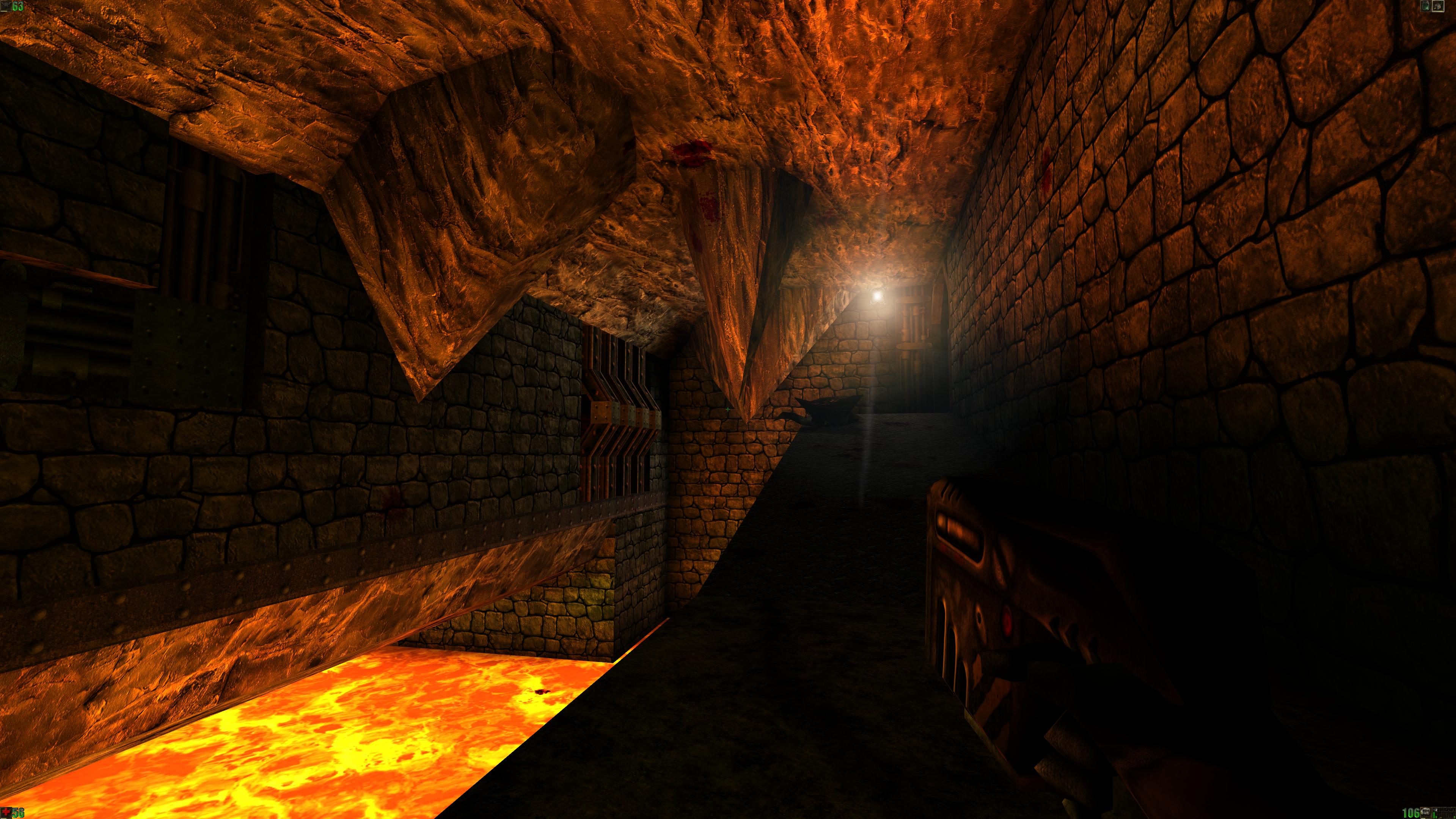
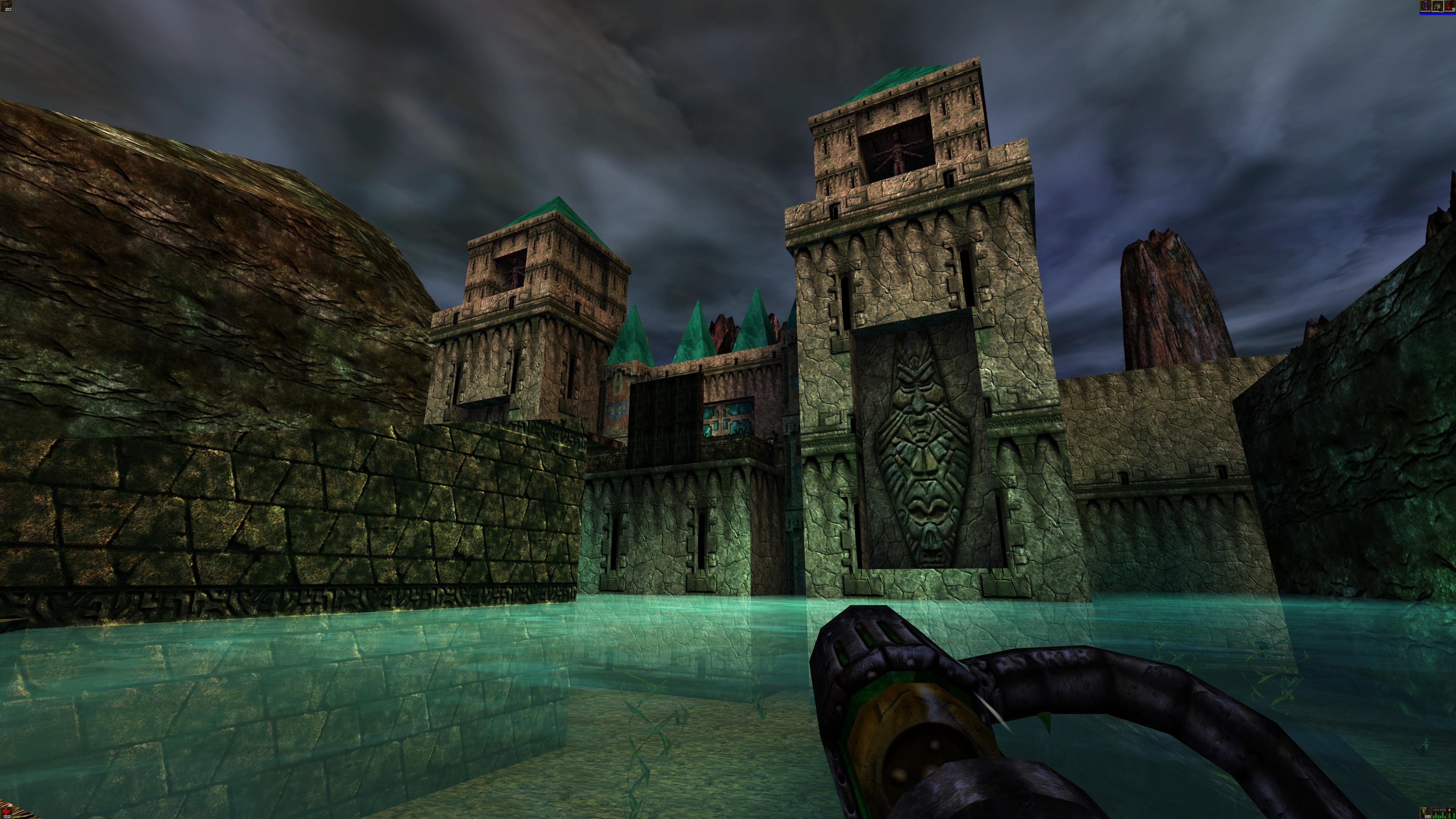
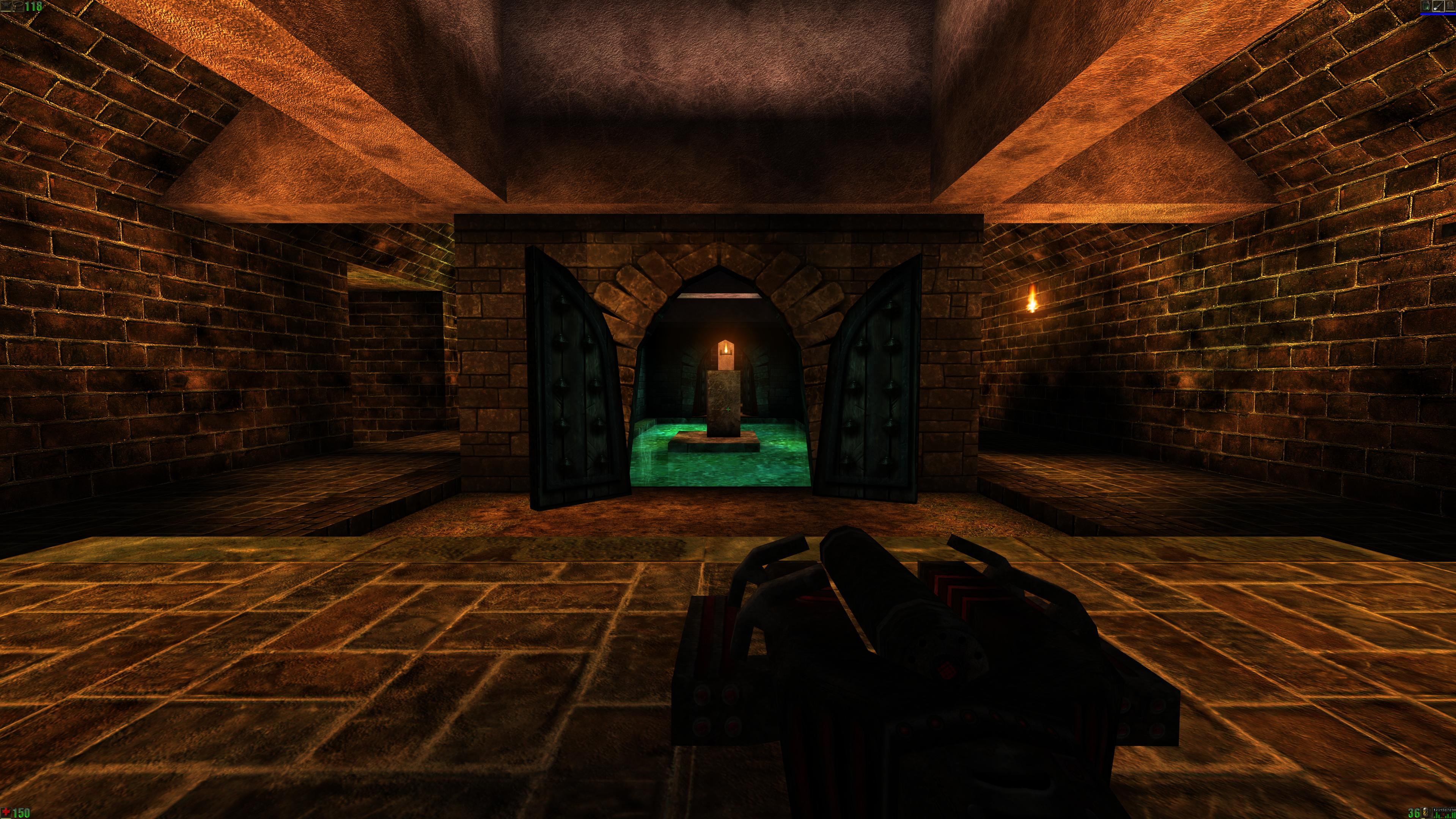
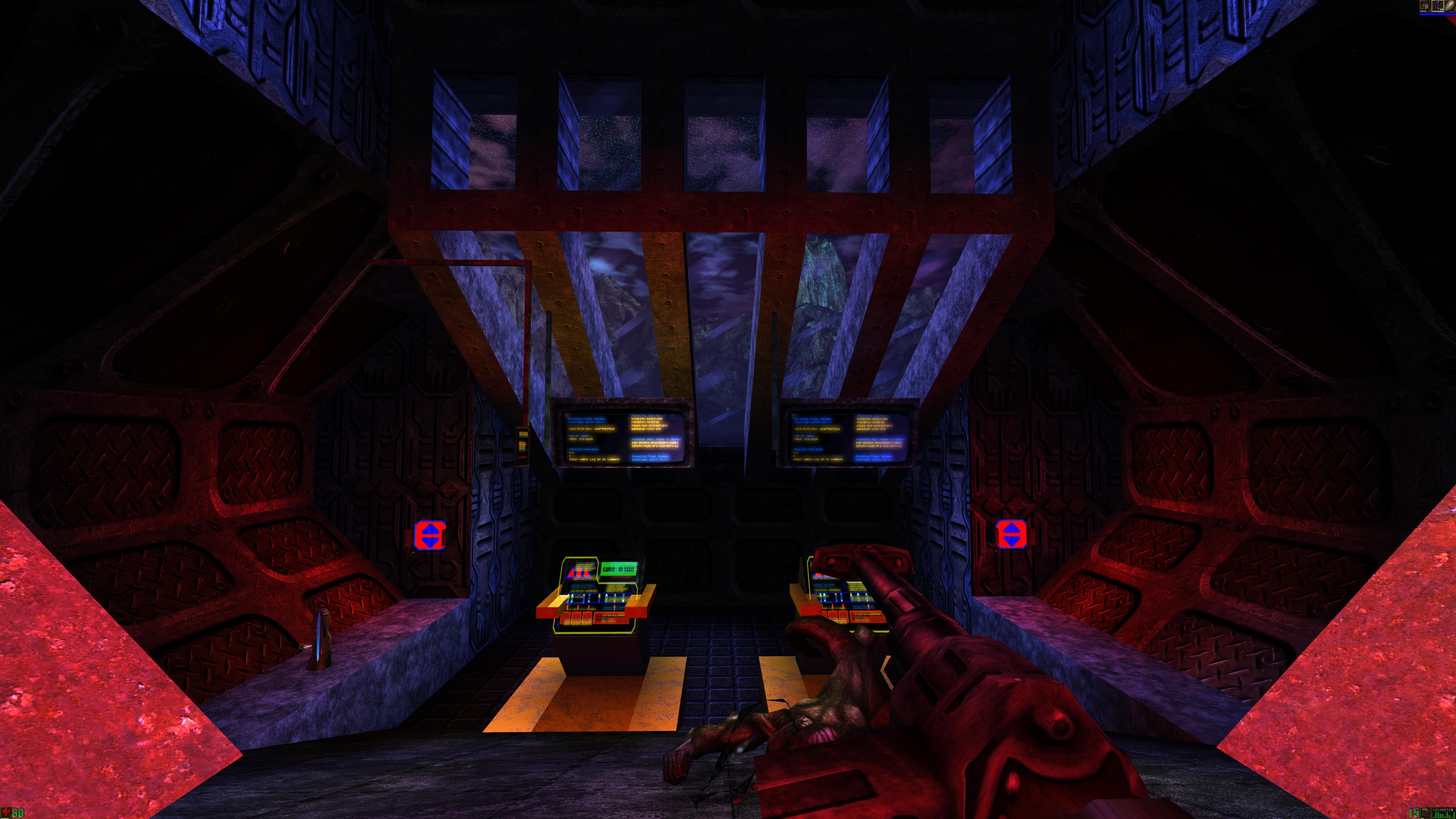


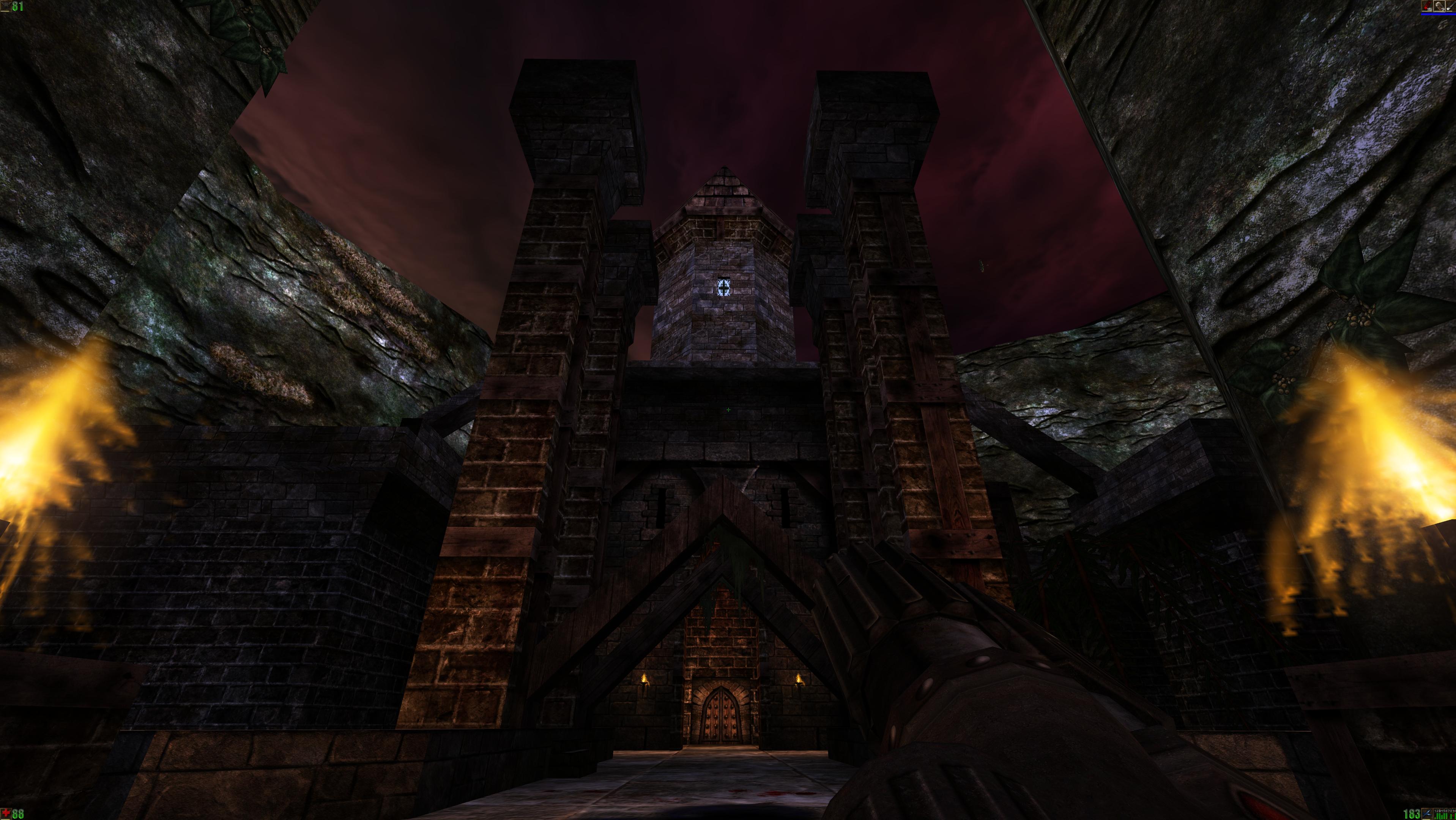
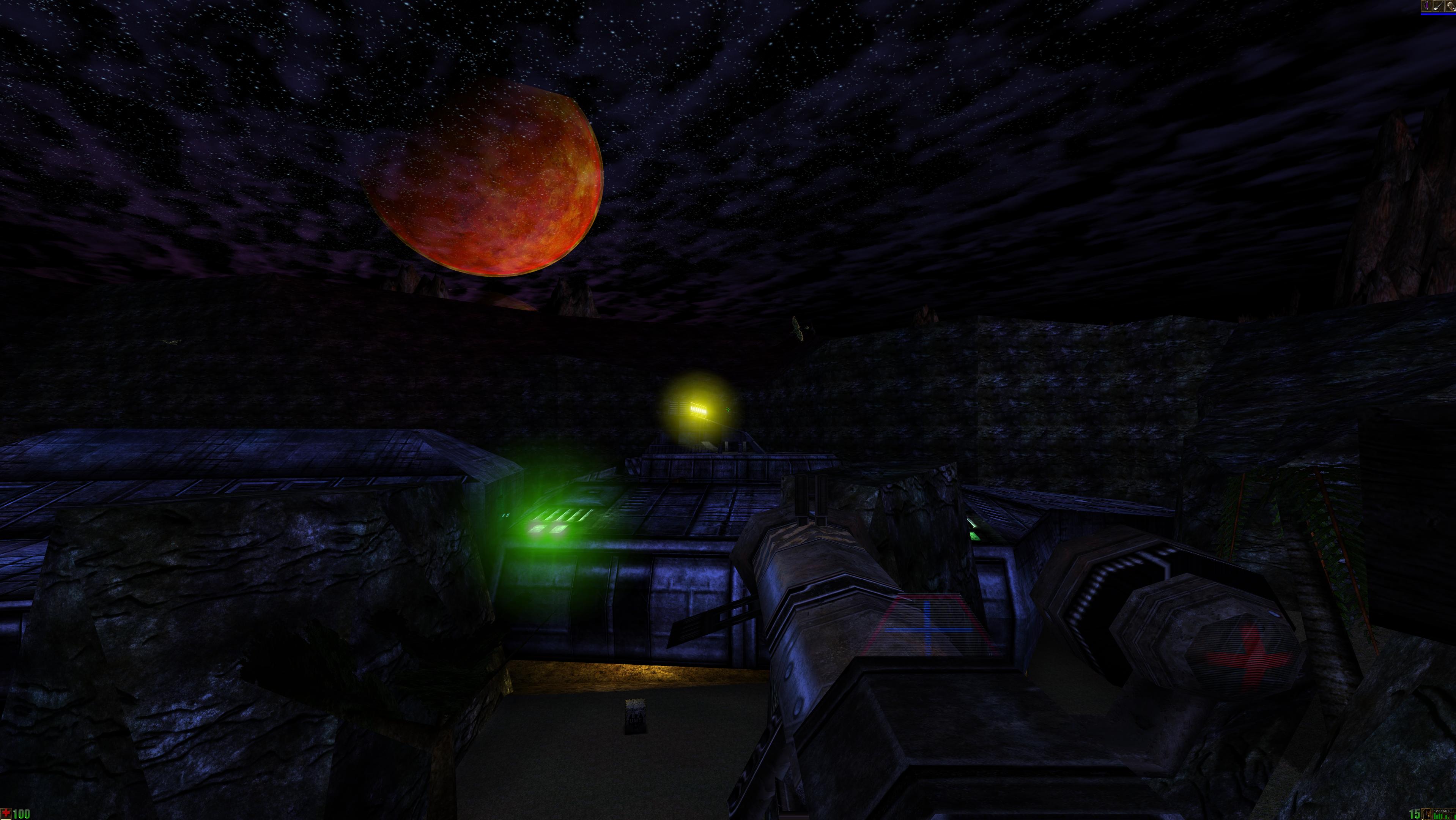
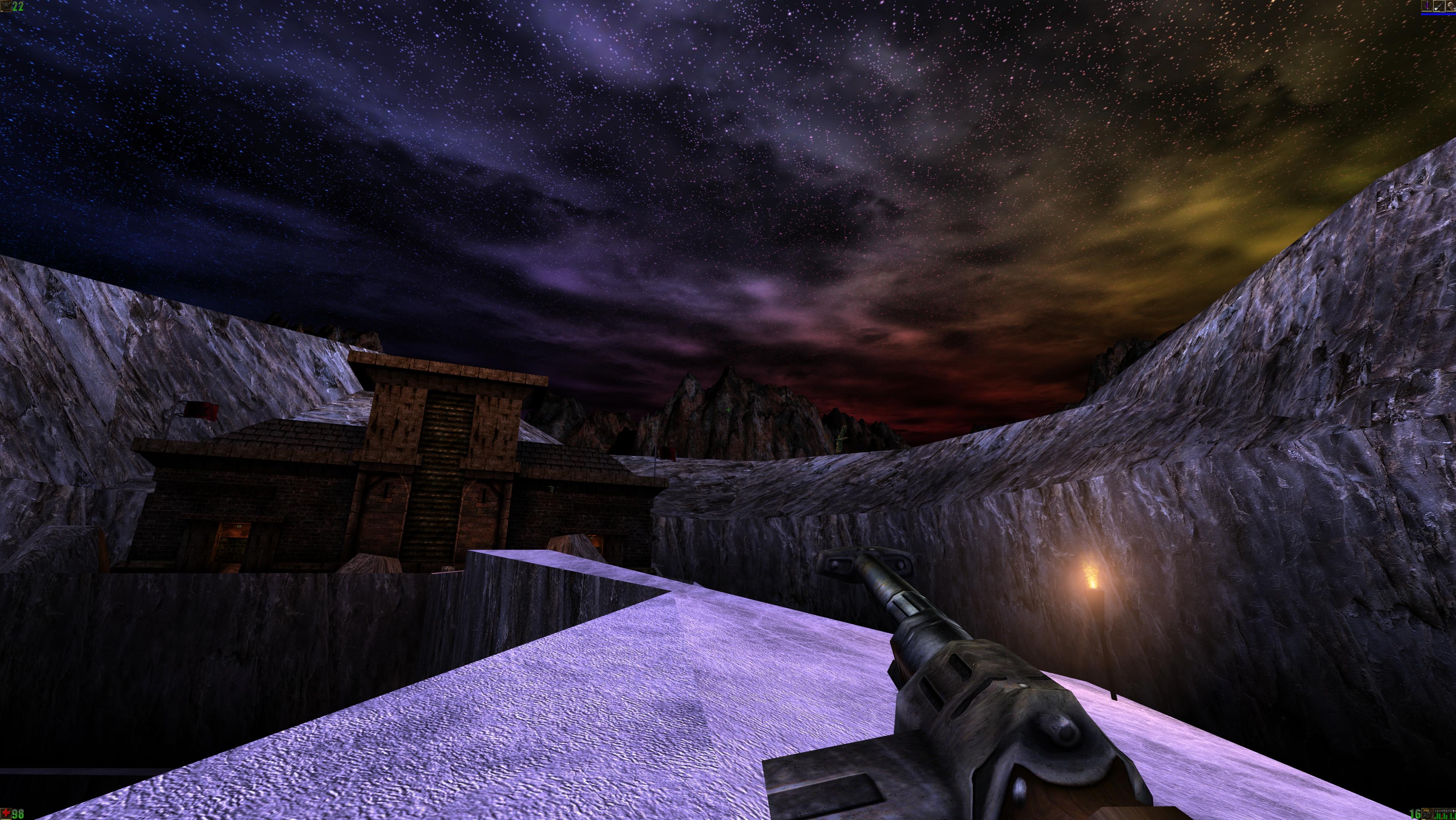
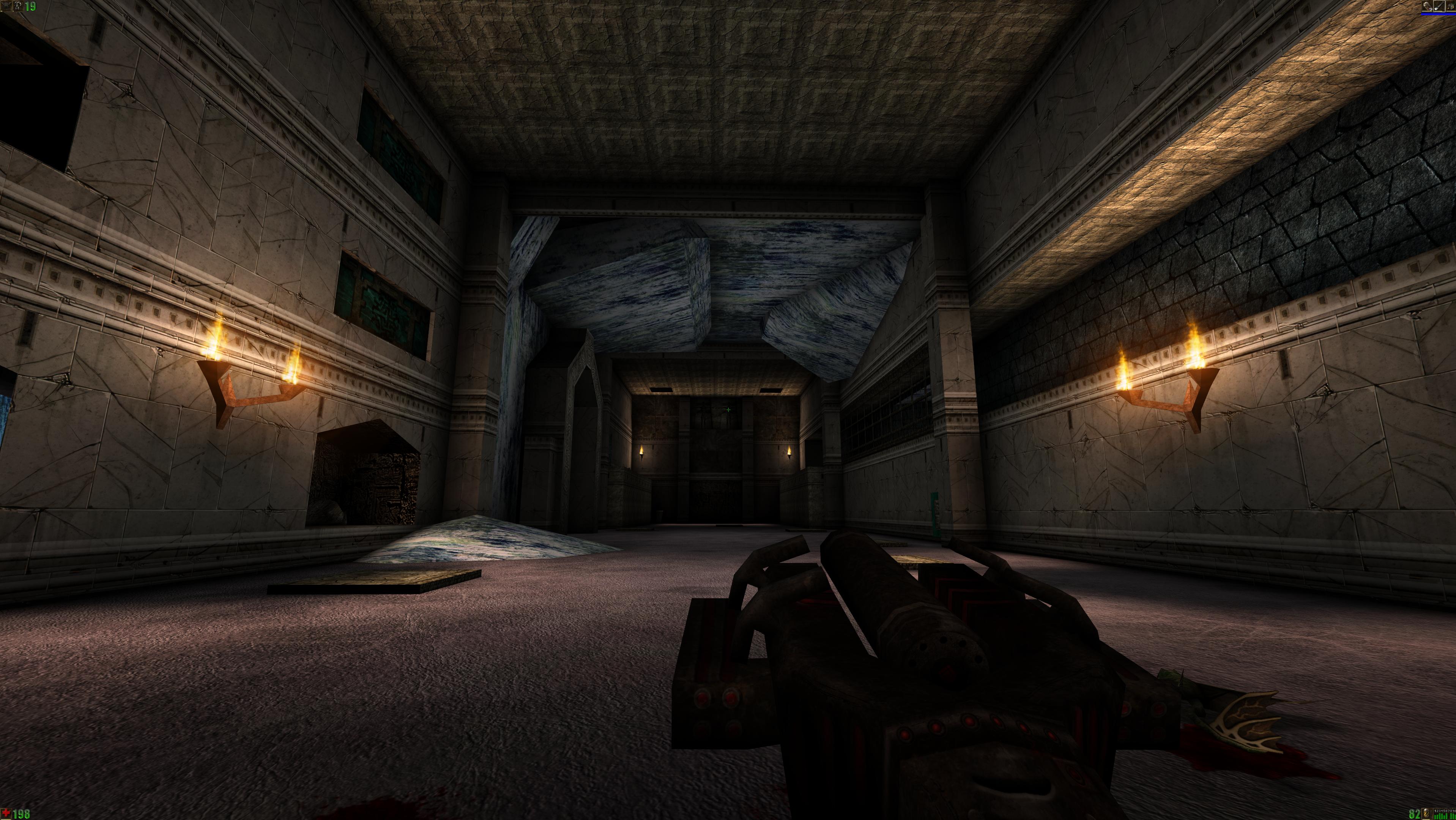

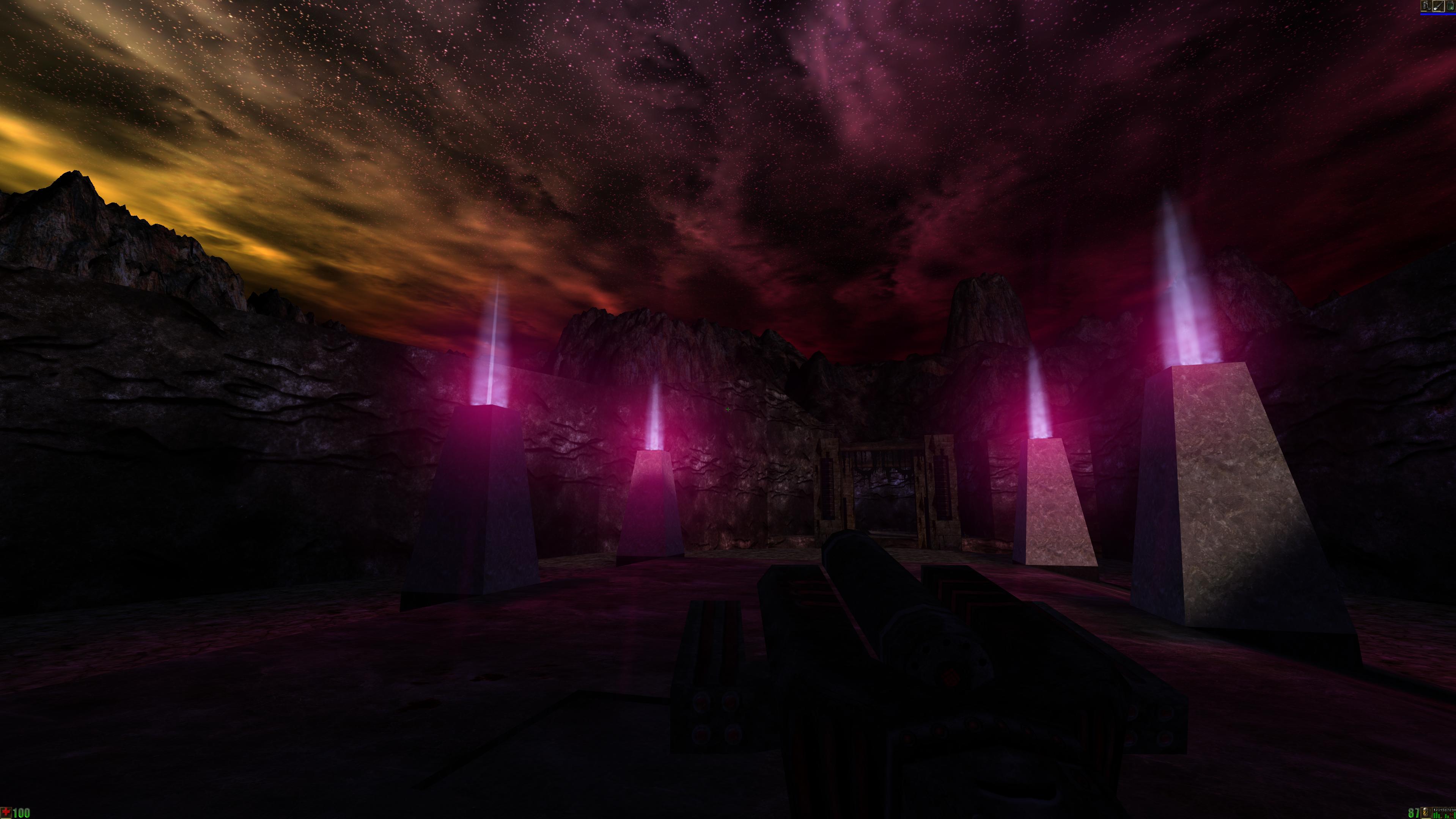
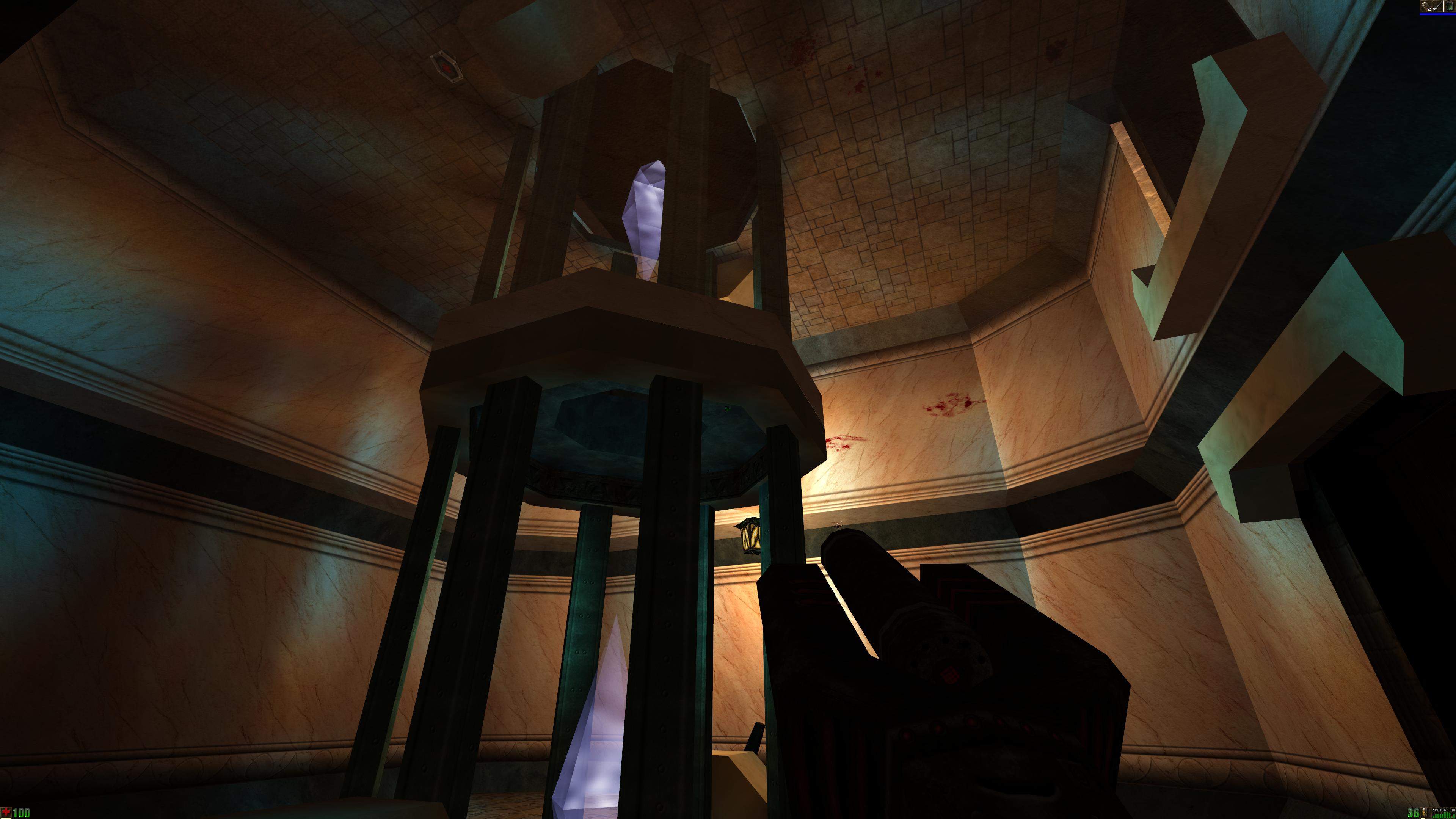


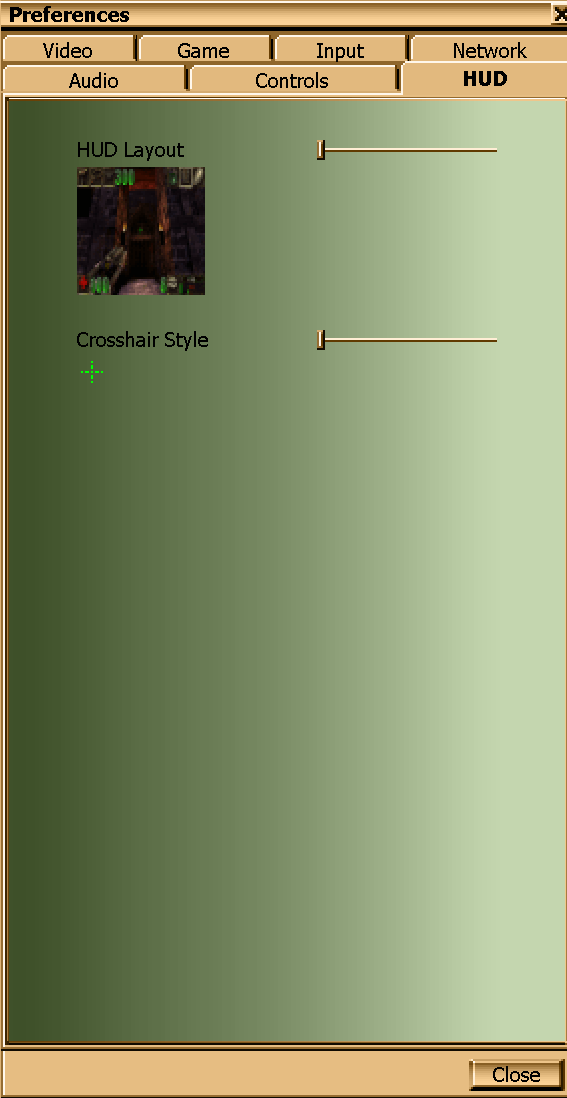
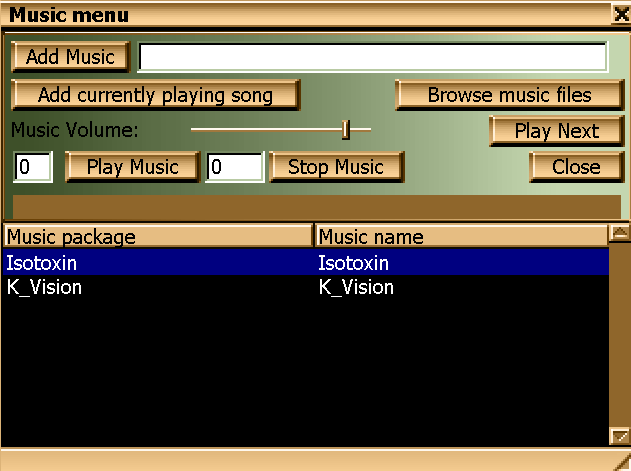
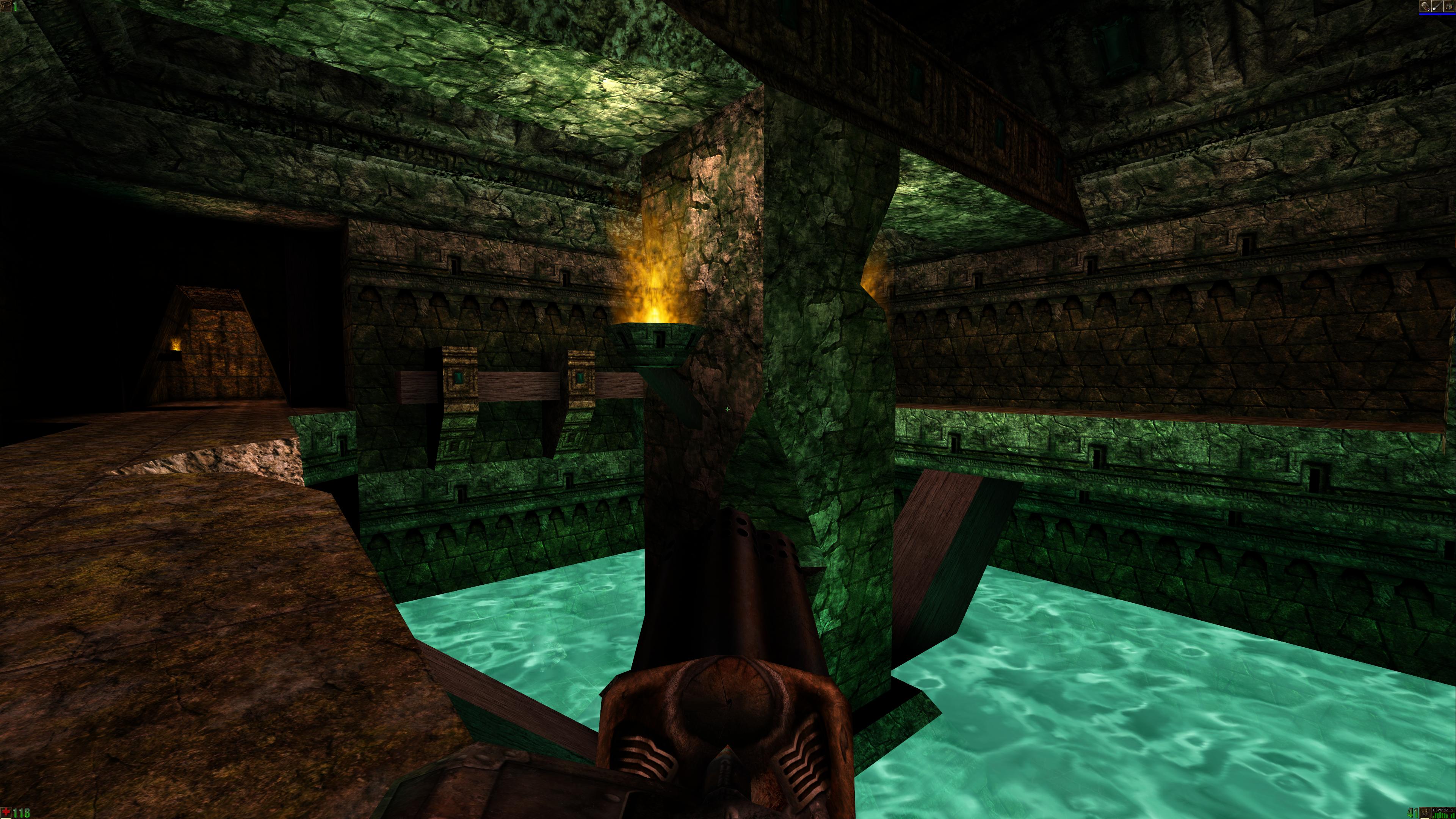

 (16 votes, average: 4.00 out of 5)
(16 votes, average: 4.00 out of 5)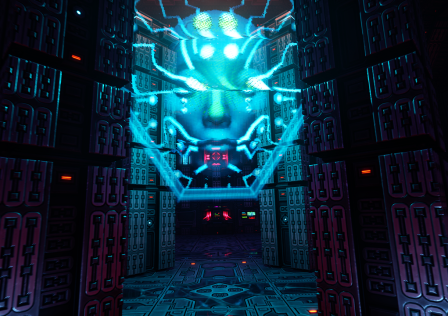
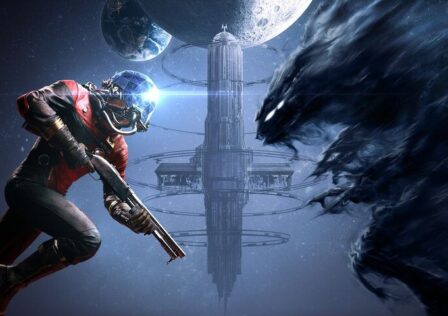
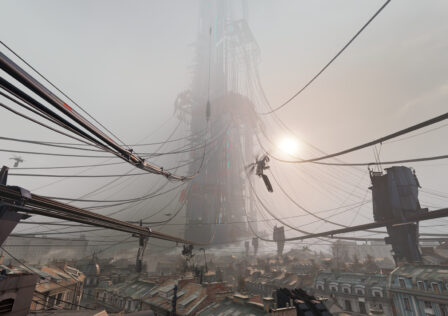
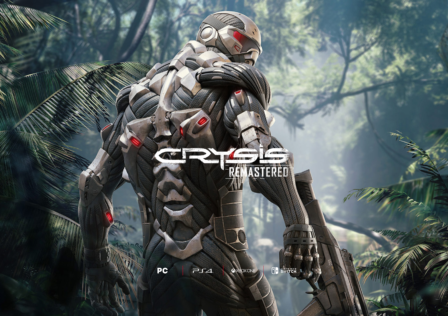

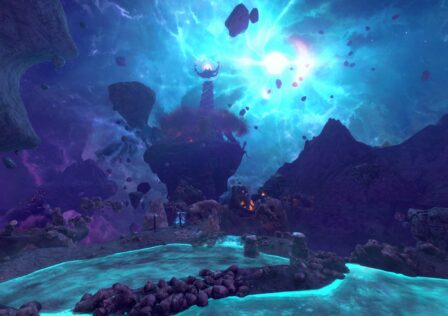
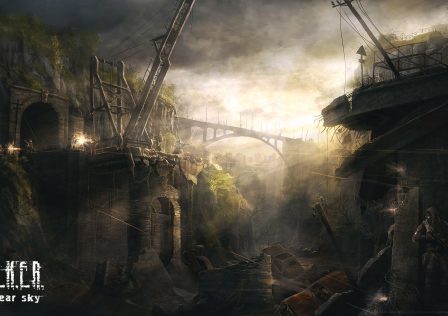


The best written game review I have ever seen. I’m simply not used to such high standards.
Have you seen that Integer Scaling stuff AMD is enabling support for on its newer hardware?
Man, maybe I’d be able to stream forced “No Scaling” mode footage without extreme letterboxing if I had an AMD GPU.
Integer Scaling is not needed on this game actually.
There’s something extremely interesting in Unreal’s future: DXU24, an Unreal Engine 1 to Unreal Engine 5 translation layer. It’s far from ready especially for Unreal, but it will allow Unreal Gold (+ mods like Unreal Evolution) to run within UE5 essentially, with UE5 material and lighting overrides, and you’ll even be able to make mods for the game in UE5.
https://www.youtube.com/watch?v=CjNX7CwPMiI